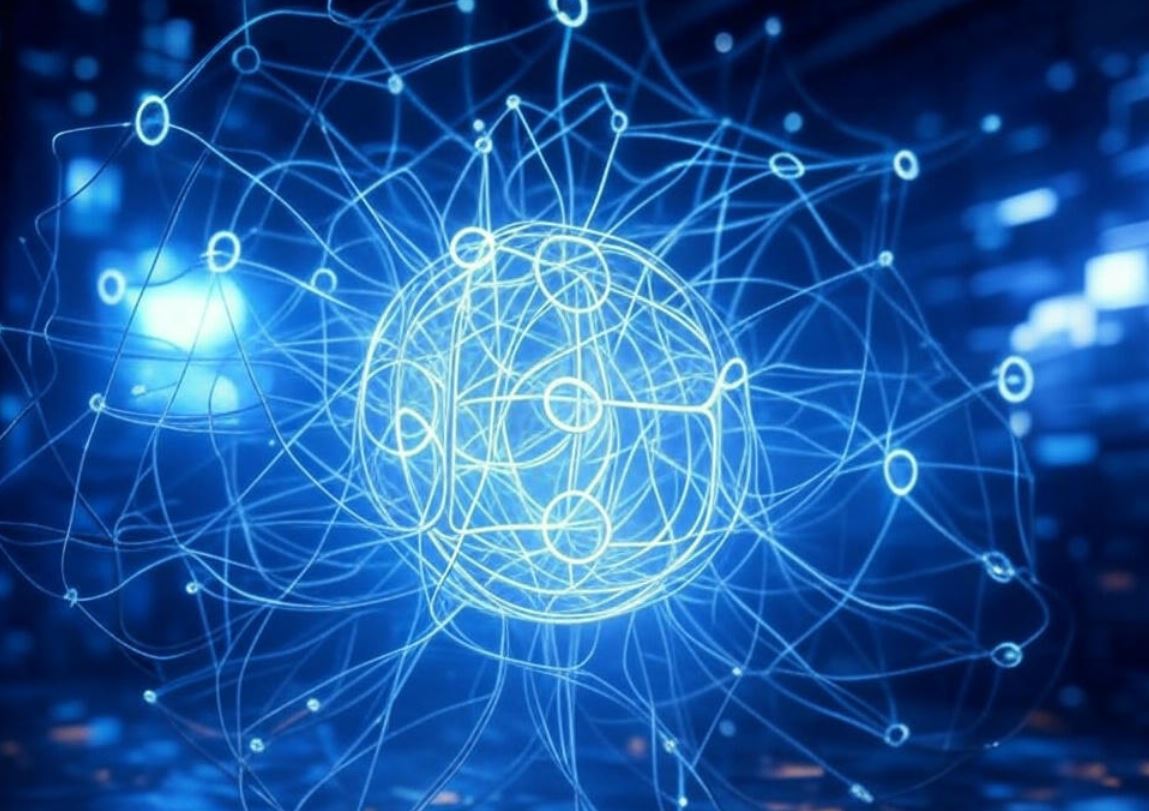The intersection of quantum computing and machine learning has sparked a revolution in the tech world, giving rise to a field known as Quantum Machine Learning (QML). As of April 2025, this emerging discipline is poised to redefine how we process data, solve complex problems, and push the boundaries of artificial intelligence (AI). By harnessing the principles of quantum mechanics—such as superposition, entanglement, and quantum interference—QML promises to tackle challenges that classical computers struggle with, potentially transforming industries from healthcare to finance. In this 1200-word blog post, we’ll explore what Quantum Machine Learning is, how it works, its current applications, challenges, and the future it holds for technology and society.
What is Quantum Machine Learning?
Quantum Machine Learning combines the computational power of quantum computing with the pattern-recognition capabilities of machine learning. To understand QML, we first need to break down its two core components.
Quantum computing leverages the principles of quantum mechanics to process information in ways that classical computers cannot. Unlike classical bits, which represent data as either 0s or 1s, quantum bits (qubits) can exist in a superposition of states, meaning they can represent both 0 and 1 simultaneously. This allows quantum computers to perform many calculations at once, offering exponential speedup for certain problems. Additionally, phenomena like entanglement (where qubits become interconnected, sharing information instantaneously) and quantum interference (used to amplify correct solutions) make quantum systems uniquely powerful.
Machine learning, on the other hand, is a subset of AI that enables systems to learn from data, identify patterns, and make predictions without being explicitly programmed. Classical machine learning algorithms, such as neural networks and support vector machines, have driven breakthroughs in image recognition, natural language processing, and more. However, these algorithms often require immense computational resources and struggle with problems involving high-dimensional data or complex optimization.
Quantum Machine Learning seeks to merge these fields by using quantum computers to enhance machine learning algorithms. The goal is to achieve what’s known as “quantum advantage”—where a quantum algorithm outperforms its classical counterpart in speed, accuracy, or efficiency. For example, QML could accelerate tasks like training deep neural networks, optimizing large-scale models, or solving problems in quantum chemistry that are intractable for classical systems.
How Does Quantum Machine Learning Work?
At its core, QML involves running machine learning algorithms on quantum computers or using quantum-inspired techniques on classical hardware. Here’s a simplified look at how it works:
- Data Encoding: To process data on a quantum computer, classical data (e.g., images, text, or numerical datasets) must be encoded into a quantum state. This is often done using techniques like amplitude encoding, where data points are mapped to the amplitudes of a quantum state, or angle encoding, where data is represented by the angles of qubits.
- Quantum Algorithms: Once the data is encoded, quantum algorithms are applied to perform machine learning tasks. Some notable quantum algorithms include:
- Quantum Support Vector Machines (QSVM): These use quantum kernels to classify data in high-dimensional spaces more efficiently than classical SVMs.
- Quantum Neural Networks (QNNs): These are quantum analogs of classical neural networks, using quantum circuits to model complex relationships in data.
- Variational Quantum Algorithms (VQAs): These hybrid algorithms combine quantum and classical computing to optimize parameters in machine learning models, often used in noisy intermediate-scale quantum (NISQ) devices.
- Measurement and Output: After processing, the quantum system is measured, collapsing its state into a classical output (e.g., a classification label or a predicted value). This output is then interpreted and used for decision-making.
A key advantage of QML is its ability to exploit quantum parallelism. For instance, a quantum algorithm can evaluate multiple solutions simultaneously thanks to superposition, potentially reducing the time complexity of tasks like optimization or clustering. Additionally, quantum entanglement can capture correlations in data that classical systems might miss, improving the accuracy of models.
Current Applications of Quantum Machine Learning
While QML is still in its infancy, several applications are already showing promise as of 2025. Here are a few areas where QML is making an impact:
- Drug Discovery and Healthcare: QML is being used to simulate molecular interactions at the quantum level, a task that classical computers struggle with due to the exponential complexity of quantum systems. For example, companies like Google Quantum AI and IBM are exploring QML to design new drugs by predicting how molecules will interact with biological targets, potentially speeding up the development of life-saving treatments.
- Financial Modeling: In finance, QML is being applied to optimize portfolios, detect fraud, and price complex derivatives. Quantum algorithms can process vast datasets of market trends faster than classical methods, giving financial institutions a competitive edge. JPMorgan Chase, for instance, has partnered with quantum computing firms to explore QML for risk analysis.
- Climate Modeling: Climate change research involves analyzing massive datasets to predict environmental shifts. QML can accelerate simulations of atmospheric chemistry and optimize renewable energy systems, helping scientists develop more accurate models and sustainable solutions.
- Cybersecurity: Quantum algorithms can enhance machine learning models used for anomaly detection, identifying cyber threats in real time. At the same time, QML is being explored to develop quantum-resistant encryption methods, preparing for a future where quantum computers could break classical cryptographic systems.
Challenges Facing Quantum Machine Learning
Despite its potential, QML faces significant hurdles that must be addressed before it can achieve widespread adoption.
- Hardware Limitations: Current quantum computers are in the NISQ era, meaning they are noisy and error-prone, with limited qubit counts (typically under 1000 qubits as of 2025). This makes it difficult to run large-scale QML algorithms, which often require fault-tolerant quantum systems that won’t be available for several years.
- Data Encoding Bottlenecks: Encoding classical data into quantum states is computationally expensive and can negate the speedup offered by quantum algorithms. Researchers are working on more efficient encoding methods, but this remains a major challenge.
- Algorithm Development: While some quantum algorithms show theoretical advantages, proving a practical quantum advantage over classical methods is still elusive for most machine learning tasks. Many QML algorithms are hybrid, relying on classical computers for parts of the computation, which can limit their overall efficiency.
- Talent and Accessibility: QML requires expertise in both quantum computing and machine learning, a rare combination. Additionally, access to quantum hardware is limited, with most researchers relying on cloud-based platforms like IBM Quantum or Amazon Braket, which can be costly and restrictive.
- Interpretability: Quantum systems are inherently probabilistic, and their “black box” nature makes it difficult to interpret how QML models arrive at their predictions, a critical issue in fields like healthcare and finance where explainability is essential.
The Future of Quantum Machine Learning
Looking ahead, the future of QML is both exciting and uncertain. Advances in quantum hardware—such as Google’s Sycamore processor or IBM’s roadmap to achieve 100,000 qubits by 2030—could unlock the full potential of QML, enabling it to tackle problems that are currently intractable. For example, QML could revolutionize personalized medicine by modeling entire biological systems at the quantum level, or optimize global supply chains by solving complex logistical problems in seconds.
In the near term, hybrid quantum-classical approaches will likely dominate, with QML being used to enhance specific components of machine learning pipelines, such as feature selection or optimization. As quantum hardware improves, we may see QML algorithms that fully outperform classical methods, achieving the long-sought quantum advantage.
Education and collaboration will also play a key role. Initiatives like Microsoft’s Q# programming language and online courses on quantum computing are making QML more accessible to developers and researchers. Governments and private companies are investing heavily in quantum research—China, for instance, has poured billions into its National Quantum Initiative, while the U.S. passed the National Quantum Initiative Act to accelerate development.
Conclusion: A Quantum Leap Forward
Quantum Machine Learning represents a bold step into the future of artificial intelligence, blending the strange and powerful world of quantum mechanics with the data-driven insights of machine learning. While challenges remain, the potential rewards are immense—faster computations, more accurate models, and solutions to problems once thought unsolvable. As we stand on the cusp of this technological revolution in 2025, one thing is clear: QML is not just a theoretical curiosity but a transformative force that could reshape industries and redefine what’s possible. For researchers, businesses, and enthusiasts alike, the journey into Quantum Machine Learning is just beginning, and the possibilities are as vast as the quantum realm itself.




